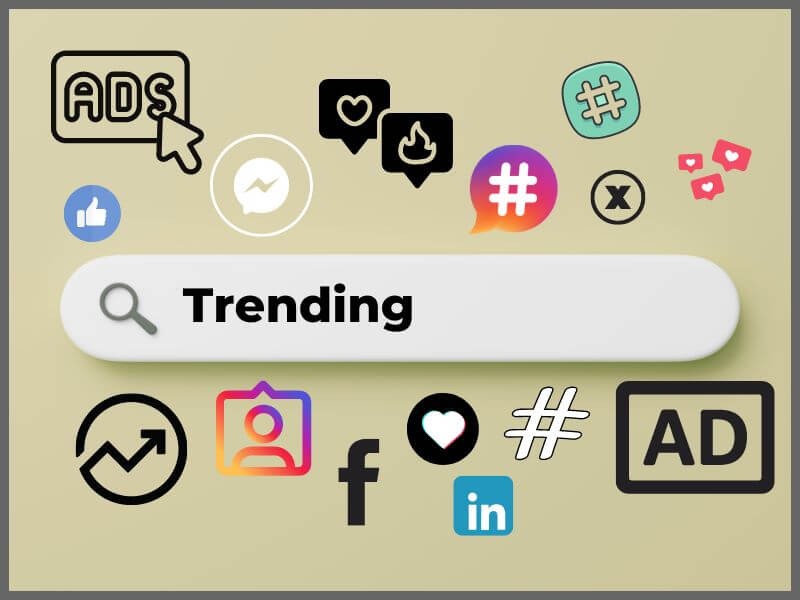
Digital marketing influences everything around us and is continuously reshaping the way we communicate. Social media platforms have become our go-to way for personal expression, establishing businesses, and brand marketing. But do you know what to do to not ruin your social media presence?
The omnipresence of social media is undeniable, and is now a vital form for information flow and connectivity.
And as social media has its reach worldwide, people and brands are able to connect as never before.
Despite its obvious significance, the journey through social media is often paved with faux pas and gaffes. Many people and businesses, intentionally or unintentionally, "know" how to ruin your social media presence expertly.
The best way to actually tank your social media presence is by disregarding your audience's feedback.
Don't you have your social media for your audience?
Keep in mind that your audience's engagement is the currency of social media; disregarding it will ruin your presence.
If you don't reply to comments and messages, your profile falls into neglect, and so does your relevance.
Interaction fuels the social media "ecosystem"; with indifference from the person who runs the social media profile, its presence declines significantly.

Relevant content has its value. And that's that.
For social media success post content that resonates with your audience. Posting content that has no relevance either for your followers or your business is effort thrown to the wind.
In other words - alienation is the reward for irrelevance.
When content does not align with your audience's interests, engagement plummets, leaving your digital footprint on social media nonexistent.

When managing social media, finding that balance between promotion and engagement is essential.
While self-promotion is necessary, excessive self-focus drowns out the possibility of genuine interaction, turning your feed into a monologue rather than a dialogue.
It's said that too much of a good thing can be bad. In the case of promotion, it can be disastrous, as the overkill in self–promotion will repel your followers, and your post will be worthless to them.
Hashtags are great for visibility and engagement, but like any tool, they require careful use to be effective. Want cluttered posts that will repel your followers even more? Overuse hashtags.
Overusing hashtags can make your posts look messy and desperate. Overloading hashtags makes your posts seem unappealing, where "you can't see the tree from the forest."
Consistency in branding is like a signature—it's how people recognize you.
Inconsistency is akin to changing your signature every day, leading to confusion and distrust.
How does inconsistent branding confuse your followers? Fluctuating visuals and messages create a discord in the message you are sending. Your audience won't know what's what.
What is inconsistent branding on social media?

Privacy management is not just about safeguarding data; it's about respecting your audience's trust and securing your brand's integrity.
Consistent privacy policies across platforms build trust, while solid data protection practices prevent breaches that could damage your reputation (and audience loyalty).
To protect data on social media, use strong passwords and two-factor authentication.
Update privacy settings regularly and limit access to profiles to trusted individuals. Educate employees about security risks and be alert to any unusual activity.
Always obtain consent before using followers' data.
Automation is an extraordinary way to save time and be efficient, but it can also be a bane for personal connections. Over-reliance on automation can transform your social media feed into a robot's monologue.
You have to recognize the moment when automation becomes noticeable or even irritating.
The charm and the use for the good of automation will wear thin when it becomes too apparent, leaving your followers feeling undervalued and overlooked.

The point of using social media is to connect with the audience, but also to be relevant. But you also have to be "up to date".
Trends are the driving force of social media. Don't ignore them, as they are often dictated by social media users.
Stagnation leads to obsolescence. To ignore the evolution of social media is to stubbornly tether your brand to irrelevance.
Social media practices constantly evolve, and there is always some new "Pedro".
And here is what you can do to stay relevant:
When dealing with social media, you also have to be sure you'll know how to handle criticism online.
Social media are as much about feedback as they are about broadcasting.
Do not, we repeat, do not delete (or ignore) negative comments – it's counterproductive.
When you delete comments, you are erasing evidence. Your audience (or the person who wrote the comment) will notice it, and your audience will often call you out, thus making one erased comment into a discussion of epic proportions.
Don't delete; answer and try to find a solution for the issues. Be polite and, if possible, compensate in some way. Addressing a negative comment can do more than erasing it.
Typos and errors are normal. Sometimes, welcome even as they show your audience that there is an actual person behind the posts.
However, frequent typos or obvious and repetitive grammatical errors can make your posts look sloppy and unprofessional.
Always check and double-check your posts. As you know, social media is a place where all your errors are multiplied, as they are there for everyone to see. It’s said “Once online, it is online forever.”

There are several things that people appreciate on social media, and one of them is a regular posting schedule.
Your most fervent followers will even anticipate your posts and be online just for them.
But if your posting schedule is inconsistent or you post either too frequently or infrequently, your audience may soon get tired of you.
You must find the right posting schedule, one that will not be too much or too little – as balance is the key.
Einstein said: If you judge a fish by its ability to climb a tree...
You probably know the rest.
So, to avid as seeing seen as you have no idea what you are doing try and tailor content to fit different social media platforms.
Each platform has its language and etiquette.
What happens when you treat all platforms the same?
Uniformity across diverse platforms disregards their unique strengths, and audiences. The result is that your message is diluted and your impact diminished.
Adapting your content to each platform respects their specific features, but what is most important - resonates more deeply with their distinct user bases.
So, for each of the most popular social media platforms, we can say "to each its own", and here are some examples of how to:
.jpg)
Now that we have numbered all of these "what not to do", your job is to make sure to actually not do them. Or do the exact opposite.
The main thing is to stay relevant, but not to your peers or to the company's CEO (if you are managing someone else's platforms)—the goal is to win over and communicate with your followers.
You know the ones? The people who are actually interested in your company, your brand and what you have to say (and sell).
Here is our advice on five simple rules of how not to ruin your social media (after all, why do you have them if you won't run them properly):
For more information on how to run your social media, or actual social media management – contact us.